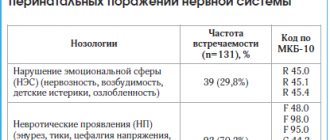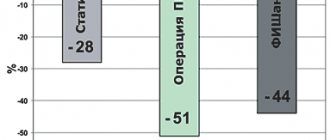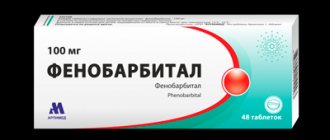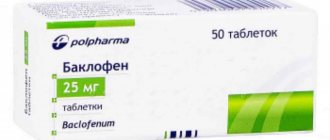Good day! I am often asked if there is anything new in the treatment of alcohol addiction? Yes! Eat! This is a new anti-alcohol drug - Selincro (Nalmefen, Selincro). Today we will be interested in everything about this drug: instructions for use, price, reviews of alcoholics.
You will not argue that alcoholism and its treatment are one of the most important and problematic issues in most countries. Traditional methods, which are based on complete abstinence from alcoholic beverages, are very often not effective. This happens because most alcoholics want to get rid of addiction, reduce alcohol consumption, but are not ready to completely give up alcohol.
For patients who cannot be treated with absolute sobriety, the method of gradually reducing alcohol consumption is successfully used. This method allows you to reduce the consumption of alcoholic beverages to a safe level, and, accordingly, reduce the harmful effects of alcohol and the risk of developing diseases.
Not everyone knows that there is a medicine that helps treat alcohol addiction using this method. This drug is called Selincro (Nalmefen, Selincro), and it is used to reduce the amount of alcohol consumed.
Numerous studies have proven that Selincro tablets can reduce alcohol consumption even in chronic and heavy alcoholics. The consumption of alcoholic beverages is reduced by 40% already in the first month of their use, and after six months patients drink 60% less.
The results of the treatment are maintained, the tablets are well tolerated, and the side effects disappear quickly.
When treating alcohol dependence with Selincro:
- harm from drinking alcoholic beverages is reduced;
- the risk of developing somatic, neurological, and mental diseases that alcoholism leads to is reduced;
- the course of existing diseases is alleviated.
Development and testing of the drug began in the 1990s, but it was officially registered in Europe in 2013, and in Russia in 2015. Its main goal is to reduce alcohol consumption to acceptable doses.
Mechanism of action of the drug Selincro (Nalmefene)
Nalmefene is an opioid antagonist, i.e. blocks opiate receptors, thereby helping to block the feeling of pleasure and euphoria when drinking alcohol (in other words, it affects the processes in the brain responsible for the desire to drink alcohol), eliminates the effect of opioid drugs, expressed in anxiety, depression, and bad mood. The use of this drug leads to a decrease in alcohol consumption, allows you to control the amount of alcohol, without becoming addictive and dependent on it.
During testing, it was revealed that in heavy alcoholics, after taking Nalmefene tablets, the days of particularly heavy drinking decreased from 19 to 8 days a month, and the amount of alcohol consumed per day decreased by three times. There were side effects when taking the pills, but they were minor and went away quickly. Side effects included nausea, vomiting, dizziness, weakness and headache, sweating, and sleep disturbances.
All studies of the drug have proven that it is well tolerated by patients, effective in gradually reducing alcohol, safe, and easily excreted from the body. It can be used for varying severity of alcoholism and different characteristics of the patient.
Selincro, 18 mg, film-coated tablets, 14 pcs.
Mechanism of action
Nalmefene is a modulator of the opioid system with pronounced affinity for μ-, δ- and κ-receptors.
In vitro studies
showed that nalmefene is a selective ligand of opioid receptors, exhibiting the properties of an antagonist for μ- and δ-receptors and a partial agonist for κ-receptors.
In vivo studies
showed that nalmefene reduces alcohol consumption, apparently by modulating corticomesolimbic functions.
Data obtained from preclinical studies, clinical studies and the literature do not suggest that nalmefene has any potential for dependence or abuse.
Clinical efficacy and safety
The effectiveness of nalmefene in reducing alcohol consumption in patients with alcohol dependence was assessed in two studies. Patients with a history of delirium tremens, hallucinations, seizures, serious mental disorders, and patients with significant impairment of liver function were excluded from the studies. Patients who had significant physical symptoms of alcohol withdrawal at the time of screening or randomization were also excluded. The majority of patients (80%) included in the studies were at high or very high risk of developing harmful consequences of alcohol use at the time of screening (according to the WHO definition of intake of >60 g/day pure alcohol for men and >40 g/day pure alcohol for women), of whom 65% remained at high or very high risk until randomization.
Both studies were randomized, double-blind, placebo-controlled, parallel group studies, and after 6 months of treatment, patients receiving nalmefene were re-randomized to receive either nalmefene or placebo for 1 month. run-out
period. The effectiveness of nalmefene was also studied in a 1-year, randomized, double-blind, placebo-controlled, parallel group study. A total of 1941 patients were treated in these studies, of whom 1144 patients received nalmefene 18 mg (as needed).
During the first visit, the patient's clinical status, social situation and alcohol consumption patterns (according to the patient) were assessed. During randomization, which was carried out 1–2 weeks later, the level of risk of developing the harmful consequences of alcohol consumption was re-assessed and nalmefene therapy in combination with a psychosocial intervention (BRENDA)
aimed at maintaining treatment adherence and reducing alcohol consumption. Nalmefene was taken as needed, which accounted for an average of half the study days.
The effectiveness of nalmefene was assessed according to two main criteria: the change in the number of days of heavy drinking (HDD) per month between the baseline examination and the 6th month and the change in the daily alcohol intake (DDA) between the baseline examination and the 6th month. A traffic accident was defined as a day on which ≥60 g of pure alcohol was consumed by men and ≥40 g by women.
During the period between the baseline visit (screening) and randomization, some patients showed a significant reduction in RTA and SDA due to non-pharmacological effects. In Studies 1 (n=579) and 2 (n=655), 18 and 33% of the total study population, respectively, significantly reduced their alcohol consumption between screening and randomization. For patients at initially high and very high risk of developing harmful consequences of alcohol use, 35% of them improved due to non-pharmacological reasons between screening and randomization. In these patients, at the time of randomization, the amount of alcohol consumed was so low that the scope for further improvement was very limited (the baseline level was almost the minimum level).
Patients who remained at high and very high risk of developing harmful consequences of alcohol use between screening and randomization retrospectively constituted the target population. In this group, the treatment effect was greater than in the general population.
The clinical efficacy of nalmefene and the validity of the data were analyzed in patients at high and very high risk of developing harmful consequences of alcohol use at screening and randomization. Initially, such patients had an average of 23 accidents/month (11% of patients had less than 14 accidents/month) with a daily consumption of 106 g of pure alcohol. In most patients, the level of alcohol dependence, as measured by the Alcohol Dependence Scale, was low (0–13 points in 55% of patients) or intermediate (14–21 points in 36% of patients).
Retrospective analysis of effectiveness in patients at high and very high risk of developing harmful consequences of alcohol use at the time of randomization
In Study 1, the proportion of patients who dropped out of the study was higher in the nalmefene group than in the placebo group (50% and 32%, respectively). The number of motor vehicle crashes at baseline was 23 days per month in both the nalmefene group (n=171) and placebo group (n=167). Among patients who remained in the study and had efficacy data available at 6 months, the number of accidents was 9 days per month in the nalmefene group (n=85) and 14 days per month in the placebo group (n=114). At baseline, SDA was 102 g in the nalmefene group and 99 g in the placebo group. Among patients who remained in the study and had efficacy data available at 6 months, the MDA was 40 g in the nalmefene group and 57 g in the placebo group.
In Study 2, the proportion of patients who dropped out of the study was higher in the nalmefene group than in the placebo group (30% and 28%, respectively). At baseline, the number of traffic accidents was 23 days per month in the nalmefene group (n=148) and 22 days per month in the placebo group (n=155). Among patients who remained in the study and had efficacy data available at 6 months, the number of accidents was 10 days per month in the nalmefene group (n=103) and 12 days per month in the placebo group (n=111). At baseline, MDA was 113 g in the nalmefene group and 108 g in the placebo group. Among patients who remained in the study and had efficacy data available at 6 months, the MDA was 44 g in the nalmefene group and 52 g in the placebo group.
An analysis of the pooled data for patients who participated in the two studies and responded to therapy is shown in Table 1.
Table 1
Generalized results of the analysis of patients with a high and very high risk of developing the harmful consequences of alcohol use at the time of screening and randomization who responded to therapy
| Reply | Placebo,% | Nalmefene, % | Inequality coefficient (95% CI) | p-value |
| SDA R70b | 19,9 | 25,4 | 1,44 (0,97; 2,13) | 0,067 |
| 0–4 accidents | 16,8 | 22,3 | 1,54 (1,02; 2,35) | 0,04 |
a For analysis, patients who dropped out of the study were classified as nonresponders.
b Reduction of ≥70% from initial SDA level by 6 months (28-day period).
c From 0 to 4 accidents per month by month 6 (28-day period).
For the nalmefene group, there is only limited efficacy data obtained during a 1-month run-out
period.
One-year study
The study included 665 patients, 52% of whom were at high or very high risk of developing harmful consequences of alcohol use at the time of screening, in turn, 52% of these patients (27% of the total population) remained at high or very high risk at the time of screening. randomization. In this target population, more early discontinuers were in the nalmefene group (45%) compared with discontinuations in the placebo group (31%). At baseline, the number of motor vehicle crashes was 19 days per month in both the nalmefene group (n = 141) and placebo group (n = 42). Among patients who remained in the study and had efficacy data available at 1 year, the number of motor vehicle accidents was 5 days per month in the nalmefene group (n=78) and 10 days per month in the placebo group (n=29). At baseline, SDA was 100 g in the nalmefene group and 101 g in the placebo group. Among patients who remained in the study and had efficacy data available at 1 year, the MDA was 24 g in the nalmefene group and 47 g in the placebo group.
Selincro (Nalmefene): instructions for use, price
Selincro is a new anti-alcohol medicine. It is used so that patients who abuse alcohol and are at high risk can easily and painlessly reduce the amount of alcohol they drink. It can only be used by patients who have reached the age of majority and who do not have obvious withdrawal symptoms or signs of detoxification.
Selincro can only be prescribed by a doctor; it should be taken only after consultation and, if necessary, additional examination of the patient. The doctor will establish the correct diagnosis, phase, type of disease, assess how often the patient takes alcohol, and how much. The frequency and amount of alcohol is assessed for the month preceding the visit, and if the patient has so-called binges with long periods between each, then a longer period of alcohol consumption is also assessed. The patient is asked to keep a special diary in which he will record all the data about the alcoholic drinks he took. The doctor may suggest taking a special test that will help determine how strong the alcohol addiction is, possible health risks, determine treatment and the patient’s readiness for it.
When using the drug, psychological support for the patient is very important, so you can tell your loved ones about the treatment. This will help avoid breakdowns and increase the effectiveness of treatment.
Selincro should always be used only by the patient for whom it was prescribed and should not be given to other people.
If, after taking the pills for a sufficiently long time, the patient’s condition does not improve or the symptoms of alcoholism become worse, you should definitely contact your doctor.
Correctly chosen goal is the key to successful treatment
Before prescribing Selincro, the doctor must determine the goal that the patient strives for as a result of treatment. There are several such options:
- Complete abstinence from any alcohol, that is, complete sobriety both during treatment and after it.
- A temporary reduction in alcohol consumption, followed by complete sobriety.
- Gradually reduce alcohol consumption to acceptable levels.
If the alcoholic clearly defines the final goal and agrees with it, the effectiveness of treatment will increase many times, and the result will be positive.
The drug "Selinkro" can be taken with treatment options 2 and 3. Its effectiveness in treatment using the method of gradual reduction of alcohol has been proven by numerous studies. If you completely abstain from alcohol during treatment, this drug is not prescribed or used.
About half of all chronic alcoholics refuse treatment if it involves giving up drinking completely. For these patients, the method of gradually reducing alcohol is the only way to combat alcoholism, and the drug Selincro successfully helps them with this. It often happens that over time, alcoholics who choose this method for treatment completely give up alcohol.
Of course, you now have a question about the cost of this drug. Its price in Russia varies from 4,000 rubles to 5,000 per package (that’s 14 tablets of 18 mg). Where can I buy? It's not a problem. You can even order Selincro via the Internet.
Security Selincro
The action of Selincro is gentle compared to other medications for the treatment of alcoholism, therefore the number of contraindications is minimal:
- age restrictions (childhood, adolescence, old age);
- period of lactation, pregnancy;
- severe renal and liver dysfunction;
- taking opioids, analgesics based on them, opioid dependence;
- sensitivity to nalmefene;
- galactose intolerance.
The drug is not prescribed during the period of acute alcohol withdrawal (with withdrawal syndrome, delirium tremens, alcohol intoxication, etc.). Treatment begins after the period of intoxication ends, when the symptoms of withdrawal syndrome are completely relieved. Selincro is used cautiously, under the supervision of a physician, if the patient suffers from concomitant mental disorders, convulsive disorders of any origin, mild or moderate dysfunction of the kidneys, liver, and old age (over 65 years). Long-term use of the drug is possible only under the supervision and with the permission of the treating narcologist.
Selincro does not require dosage adjustment for mild and moderate dysfunction of the liver and kidneys; the drug is non-toxic and does not reduce fertility. When drinking alcohol while taking it, there is no severe intoxication or negative side effects (only the absence of the sensations associated with intoxication expected by the patient). The safety of Selincro has been tested in 19 European countries, the drug is approved for use in Russia.
Duration of taking Selincro
How long to take the pills depends on many reasons - how serious the patient’s condition is, how long and how much he drinks, and others.
The average duration of the course is from six months to a year.
Alcoholism is a chronic disease; it can develop over several years, and treatment may be accompanied by periodic breakdowns. For these reasons, treatment cannot be short and takes so long.
Patients taking Selincro for a year noted the safety of the drug and its effectiveness with a gradual reduction in alcohol intake. In severe cases of alcoholism, the drug was used for several months after the patient had achieved the treatment goal, but this should be done with great caution and only under the supervision of a doctor.
Selincro
Selincro
(eng.
Selincro
) is a new drug for the treatment of high-risk adult patients with alcohol dependence. Selincro is a dual-acting opioid system modulator. It acts on the motivational system of the brain of patients with alcohol dependence, whose regulation is impaired. Selincro reduces the reinforcing effects of alcohol, and thereby reduces the desire to drink it. Selincro is part of a new treatment concept that aims to reduce alcohol consumption and increase treatment adherence, and also includes psychosocial support. The new strategy is to use pharmacotherapy “on demand”: one Selincro tablet is taken by the patient only on those days when there is a risk of drinking alcohol.
The effectiveness and safety of Selincro was studied in 2000 patients in 19 European countries. It was found that the use of Selincro leads to a reduction in the number of days of heavy drinking by 2-3 days per month. The benefit is a reduction in diseases and injuries by almost 1,000 cases per year per 100,000 people, including almost 80 cases of liver cirrhosis. Thus, in the new paradigm of treatment for alcohol dependence, the patient is given the right to choose: “Are you able to reduce your alcohol consumption or are you already Is it time to quit? But if therapy aimed at reducing alcohol consumption does not lead to success, the patient should stop drinking alcohol completely (from the report of I.G. Bakulin).
Dosage form and composition of Selincro
Selincro is available in the form of film-coated tablets.
The active ingredient in Selincro is nalmefene. One Selincro tablet contains 18 mg of nalmefene.
Excipients: microcrystalline cellulose, lactose, crospovidone type A, magnesium stearate, hypromellose, macrogol 400, titanium dioxide (E171).
Indications for use of Selincro
Selincro is indicated for reducing alcohol consumption in adult patients with alcohol dependence, high risk drinking, that is, more than 60 g of pure alcohol per day for men or 40 g for women, without physical withdrawal symptoms, or the need for immediate detoxification. Selincro is prescribed in combination with long-term psychosocial support aimed at increasing adherence to treatment and reducing alcohol consumption. Treatment should only be started in patients who still have a high level of alcohol use two weeks after the initial assessment.
Doses and order of administration of Selincro
Selincro should be taken as needed on the day when there is a risk of drinking.
One tablet is taken 1-2 hours before the expected time of drinking alcohol. If the patient starts taking alcohol, then Selincro tablet should be taken immediately. The maximum daily dose of Selincro is 1 tablet.
The best effect is achieved when taking Selincro for four weeks.
Selincro therapy does not provide immediate cure for alcoholism.
general information
In ATX, Selincro belongs to the group “N07 Other drugs for the treatment of diseases of the nervous system”, subgroup “N07BB Drugs used for alcohol dependence”, code “N07BB05 Nalmefene”.
In Russia, Selincro has been approved for use since May 2015. In the European Union, a similar drug Selincro has been approved since 2013.
The developer and manufacturer of Selincro is the company H. Lundbeck A/S (H. Lundbeck), Denmark.
Selincro has contraindications, side effects and application features; consultation with a specialist is necessary.
Back to section
How to take Selincro
This drug is convenient because the patient decides when to use it. Selincro should not be taken every day, but only when there is a high risk of an alcoholic relapse. The tablet should be taken an hour or two before the event at which alcohol will be consumed. If a person has already started drinking alcohol and forgot about the pill, it should be taken as quickly as possible. This is new in the treatment of alcoholism.
In cases of severe alcoholism, tablets are taken daily.
Remember: the maximum dose of the drug is one tablet per day, and under no circumstances should this dose be exceeded. In case of overdose, you should immediately call an ambulance.
Side effects when taking Selincro
Selincro is a safe drug. Side effects are minor, and cases where it is necessary to stop treatment due to them are minimal.
If side effects such as nausea, drowsiness, dizziness, vomiting, sleep disturbance do not go away for a long time, it is better to consult a doctor.
With such minor side effects, some tips will help:
- If you have nausea, you should take the tablet with meals, avoiding spicy and salty foods.
- If you feel dizzy or drowsy, you should stop driving.
- If you use an anesthetic for a headache, be sure to tell the pharmacy about taking Selincro.
An immediate visit to the doctor is necessary if the following symptoms appear:
- severe allergic reactions (rash, itching, difficulty breathing, swelling);
- irregular pulse;
- fever;
- heart rhythm disturbances;
- loss of consciousness;
- convulsions;
- constant severe headaches and dizziness;
- sudden chest pain;
- ragged breathing.
In case of allergic reactions to any component of the drug, unfortunately, it cannot be taken.
If you notice any other side effects that do not go away, it is best to consult your doctor. It is also important to remember that any side effects most often go away as the body adjusts to the medicine.
A serious problem can arise if the patient wants to reduce the effect of the pill so that the feeling of euphoria returns to him, and to do this he takes an unacceptably high dose of alcohol. The effect of Nalmefene cannot be reduced, but severe intoxication of the body may occur due to large amounts of alcohol.
Sometimes Selincro affects opioid receptors in such a way that symptoms such as anxiety, depression, and low mood may appear. Chronic alcoholics experience the same symptoms when they are sober, and alcohol temporarily alleviates them.
What you need to know before using Selincro
Some illnesses and medications can affect Selincro, so the patient must tell the doctor about:
- pregnancy or planning it;
- breastfeeding;
- taking any medications, even those sold without a prescription;
- taking medications that contain opioids (this could be cough medicine, anti-diarrhea medicine, opioid analgesics), since in this case Selincro tablets may be useless;
- taking dietary supplements, medicinal herbs;
- allergies to medications, food and others;
- heart disease;
- drug use, even if it is far in the past;
- recently undergone operations.
There are situations in which a person taking Selincro is prescribed large amounts of opioids, such as for surgery or dental work. In such cases, it is necessary to stop taking Selincro a week before starting opioid use, and then, after consulting a doctor, it can be resumed. If you suddenly need urgent medical care, you must inform about the use of Selincro so that the doctor can select the necessary medications.
Contraindications to the use of Selincro
This drug is not recommended:
- Older people, as they are more sensitive to its side effects.
- Recently given birth.
- Pregnant.
- Breastfeeding.
- Minors, since the safety and effectiveness of the drug in children and adolescents has not been clinically confirmed.
- Addicted to drugs, as withdrawal symptoms may occur, manifested in anxiety, diarrhea, nausea, rapid heartbeat, vomiting, sleep problems, runny nose, fever, sweating, and mental disorders.
- People who have recently had acute alcohol withdrawal syndrome, expressed by hallucinations, convulsions, delirium tremens.
- For galactose intolerance, lactase deficiency.
- If you are allergic to any component of the drug.
- If the patient is taking any other medications containing opioids.
- If the patient is or has been dependent on opioids, or if the patient has recently taken them.
- In case of severe liver/kidney dysfunction.
- For acute opioid withdrawal symptoms.
- If the patient has seizure disorders.
With great caution, the drug is prescribed to patients with mental disorders expressed in emotional disorders (inappropriate behavior, decreased intelligence, deterioration in performance, impaired social adaptation, etc.).
Reception scheme
The peculiarity of Selincro is the absence of a course of treatment. As-needed therapy is offered for this drug. It is assumed that the patient takes it when the desire to drink becomes too strong, provoking situations arise, etc. However, there are minimum recommended and maximum dosages, which are set by a narcologist. They must be followed for the therapy to be effective without causing an overdose.
Peculiarities:
- You are allowed to drink no more than one tablet per day;
- Selincro works more effectively if taken 1-2 hours before the expected time of drinking alcohol (the occurrence of a provoking situation);
- if the patient is already drinking alcohol, drink the tablet as quickly as possible;
- Duration of treatment: from 4 weeks. By the end of the fourth week, the effect becomes maximum and remains at this level for the entire time during which the patient continues to take the medicine;
- The time of taking pills does not depend on food intake.






